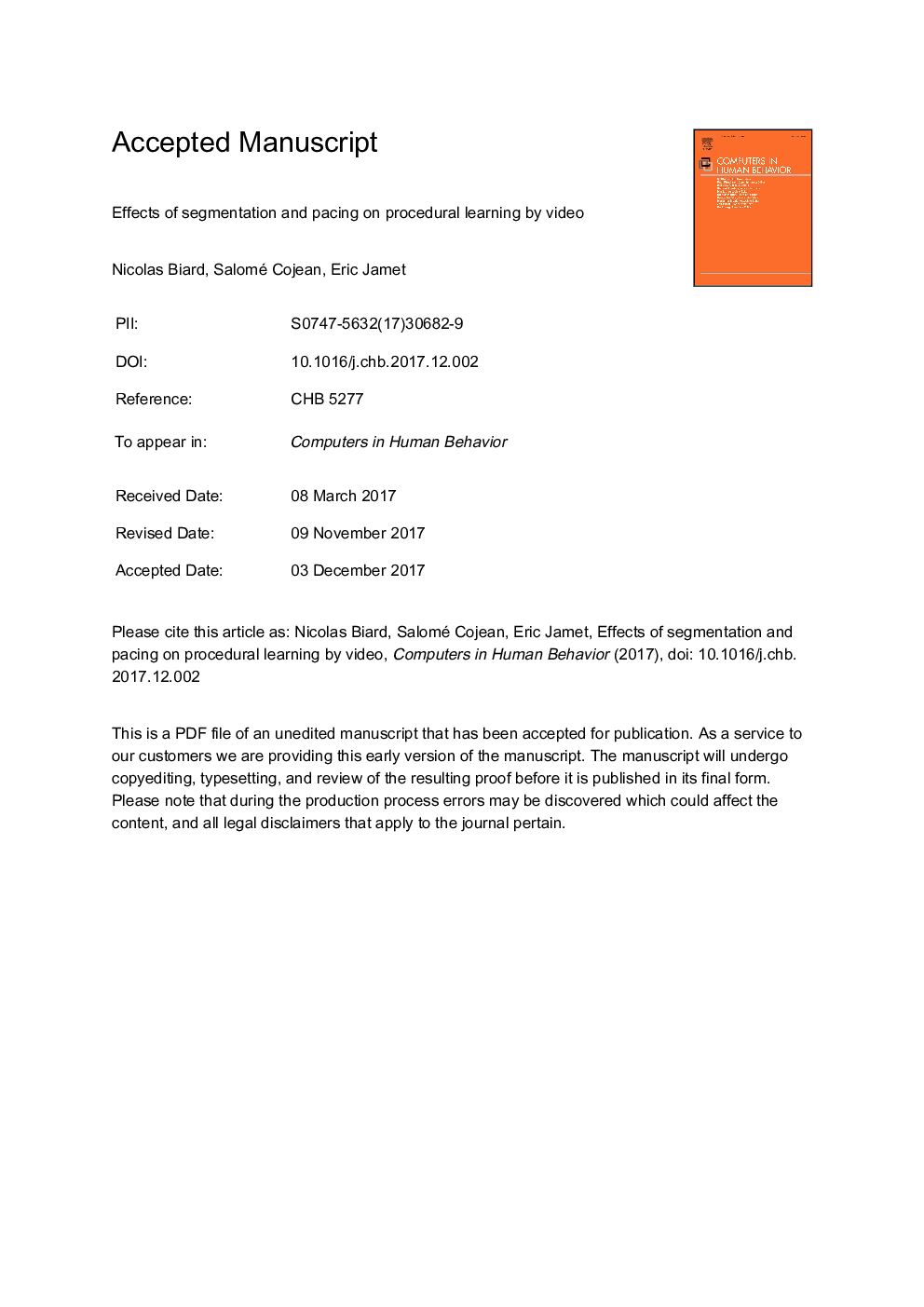| Article ID | Journal | Published Year | Pages | File Type |
|---|---|---|---|---|
| 11512894 | Computers in Human Behavior | 2018 | 29 Pages |
Abstract
Videos are increasingly being used in education and training,but can lead to specific difficulties in terms of users' learning processes, owing to the transient nature of the information that is delivered. To cope with potential cognitive overload, learner controls can be provided (e.g., pause button), but novice users' mental models may not be sufficiently relevant for them to know when to halt the video. Given that procedural learning involves memorizing an organized and discrete sequence of behaviors, we tested the assumption that providing control buttons is not sufficient for novice learners, and introducing a system-paced interruption at each procedural step is far more effective, when it comes to learning a clinical skill. In the present study, 68 occupational therapy students were divided into three groups: noninteractive video, interactive video (with learner-paced control), and segmented interactive video (interactive video with system-paced interruptions). Results showed the superiority of the segmented format for procedural learning, but no significant difference between conditions for recall test. Users made very little use of the pause button when it was available. These findings support the importance of using segmented instructional videos to reinforce representations of procedures in memory for novice learners and reduce cognitive load.
Related Topics
Physical Sciences and Engineering
Computer Science
Computer Science Applications
Authors
Nicolas Biard, Salomé Cojean, Eric Jamet,
